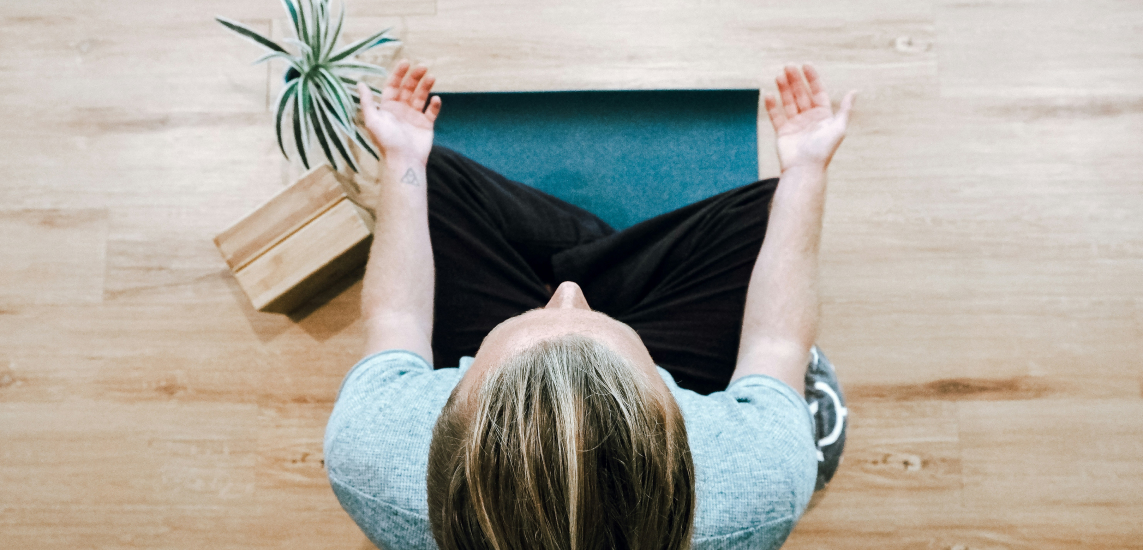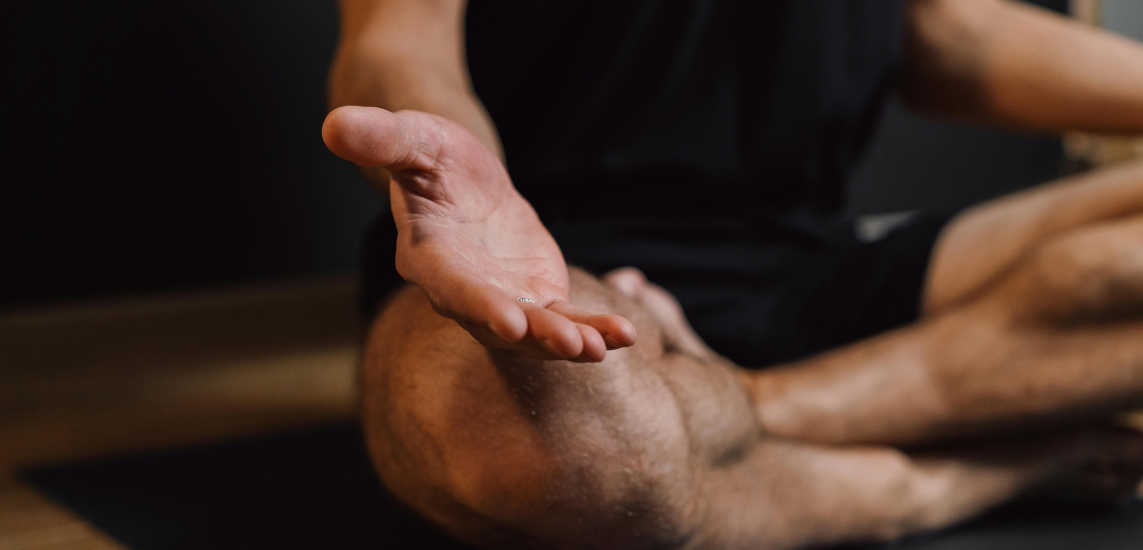Have you tried meditation, hoping to experience some of the many proven health benefits, but gave up? You may be thinking that “meditation is not for me” or “I’m not good at it”. Or maybe you are a practitioner experiencing some of the benefits of meditation — but not as many or intensely as you’d hope for. The question is how to meditate properly to feel these benefits flourishing.
How To Meditate Properly: Three Pillars Of Practicing Meditation
In my years teaching meditation, researching and writing about it, I have seen many people struggle with this. It was painful for me to watch because as a long-term meditator I know what meditation can do for you , if you learn it well and practice it properly. And my goal has always been to be the bridge that takes you from where you are now to the new you.
After a while doing this work, I realized what the missing piece was. I call it the ‘Three Pillars of Meditation’.
If you have those three pillars in your life, your practice will flourish and you will start experiencing the benefits. But if you don’t, if even one of them is missing, it will limit your practice and how much you gain from it.
The three pillars to meditate properly are:
- habit
- technique
- application.
In other words: you need to practice meditation daily, with the optimal technique and approach, and then apply the skills you got from meditation into your daily life.
Let’s now unpack what each of these three elements means.
Read more: Ancient texts refer to different times of the day as beneficial meditation hours. But when is the best time to meditate that suits your lifestyle?
The Daily Habit
Meditation is not like physical exercise, that you can get away with practicing two or three times a week. It’s the sort of thing you need to do daily — just like eating, sleeping, and brushing your teeth. It’s in that category of activities.
Why?
Because you are exposed to stress daily. Because your mind may be bogging you with negative thoughts and attachments on a daily basis. Because your ego is working on a daily basis you need to meditate on a daily basis, too. Otherwise, it will be very difficult to revert negative patterning of thoughts and emotions and get in touch with deeper states of consciousness. Thoughts are spinning in your head non-stop, and anxiety doesn’t go on vacation.
What happens if, instead, you meditate only once a week?
There is no doubt that you will experience some benefits. Right after the meditation, you will likely feel more calm, centered, and focused. You may immediately feel more clear and present. But that won’t last — because once a week is not enough for you to get real momentum in the practice.
Suppose that you want to boil water. You need to leave your kettle on for 5 minutes, so water will boil. But instead you leave it on for 2 minutes, then turn it off, and come back to it the following week to turn it on for more 2 minutes… You may do that for all the weeks of your life, but water will never boil. Because in the following week the water doesn’t continue from the temperature it was at the end of your 2 minutes; rather, it has now completely cooled down, so you are starting from zero again.
In a way, meditation practice is like this. And that is why it’s essential to practice it every day — even if only for 5 to 10 minutes. If you do that and meditate properly on a daily basis, you will have some continuity in your practice, and it will grow.
The daily habit is what makes a difference between having a practice that feels good when you do it and one that transforms you and your daily life.
The Right Technique & Approach For You
The second pillar is the right technique and right approach.
The Optimal Technique
The “right technique” doesn’t mean there is one style of meditation superior to all others and that you should practice that one. That’s just narrow-mindedness and dogmatism.
The right technique means the technique that is most optimal for you, at this moment in your life. There are many types of meditation, each of them with its own taste and unique benefits.
When most people think of meditation techniques, what comes to mind is either watching the breath or repeating a mantra. Those techniques are great, and they do work for some people — but not for everyone.
Maybe those practices even “work ok” for you, but until you experiment with a variety of styles, you can’t know if there isn’t a more effective technique out there for you.
The good news is that meditation is an incredibly vast and flexible practice. There is a great variety of methods developed by different contemplative traditions over more than 3,000 years. They were developed because different people have different needs and temperaments.
Some techniques…
- may make you feel too passive while others may energize you
- make you feel more centered while others make you feel more spaced-out or detached
- will lift your energy (good for those with depression) while others will ground your energy (good for those with anxiety)
- are more suited to improve work performance and concentration while others may be better for exploring the spiritual side of meditation
- are easier for people that are more visual by nature while others go smoother for people that are predominantly auditory or kinaesthetic
There is no “one size fits all” in meditation. Yet that is the way it is often taught. Most teachers and courses teach you only one or two techniques. Think of all the different types of sports and imagine everyone is only taught either basketball or running… Or if everyone was given the same type of food, regardless of their tastes, blood type, and allergies…
While most meditation techniques share a great number of common benefits, there is still a big difference between practicing a technique that works for you and practicing a technique that is optimal for you. Just like there is a big difference between an ‘ok job’ and your ideal job, or an ‘ok apartment’ and your ideal apartment.
The bottom line here is: learn more than one style. Experiment different techniques for some time and see what resonates, and moves the needle for you the most. That will depend on what your goals are with meditation — so starting by clarifying those is a good idea.
In Giovanni’s 10-day Insight course “What Meditation Type Is Best For You?” you’ll get to know nine different meditation styles helping you to find the style that is most effective and most enjoyable for you.
The Right Approach
The second aspect is the right approach. This is about having the right attitudes in relation to your practice. I call them ‘The Four P’s of Meditation’:
- Purpose. Practice with intention and interest. Don’t let meditation become mechanical, boring or something you need to “tick off your to-do list”.
- Pleasantness. Try to enjoy your meditation. Make it easy and pleasant for you. This includes not criticizing, shaming or blaming yourself for getting distracted during the practice or for not “doing it right”.
- Perseverance. Cultivate the commitment to continue meditating every day, no matter what. It also means to continue to learn about the practice, especially when you feel stuck.
- Patience. Don’t be in a hurry, and don’t expect too much too soon. Self-transformation takes time. Because it is worth it.
Meditate properly with these attitudes, and you will keep at it for a long time. One day you will look back realizing how much you have changed and feeling grateful for picking up and staying with the practice.
Read more: Spiritual teachers often use the term ‘surrender’. What does it mean to surrender in yoga or meditation practice and what ancient wisdom is implied in that invitation?
Application Or “Taking Meditation Beyond The Cushion”
For most of us, our goal is that meditation will be not only a nice experience and relaxing time, but something that changes us and impacts our daily life for the better. Here is where the rubber meets the road…
It is true that if you practice meditation daily — with the right technique for you — over time some things will automatically start to change. The way you see the world, the way you see yourself, how you react to people around you… But this process can be greatly accelerated if you do it on purpose.
This is what the third pillar is about: applying the insights and qualities that you experience in meditation to the rest of your life.
It’s taking meditation beyond the cushion.
There are many ways of how the application of meditation skills can happen in your life. Let’s consider one of the many skills to illustrate the point: “zooming in, zooming out” or refocusing.
How To Improve Your Focus In Daily Life
During meditation, we practice zooming in and zooming out with our attention. In most meditation styles, we are told to focus on one object — the breath, a mantra, a visualization, a part of your body, etc. — and to keep our attention on that object for as long as we can (zooming in).
We are then told that we need to be aware of our mind, so when our attention wanders into thoughts, we notice it, let those thoughts go (zooming out), and bring our mind back to the focus object.
We practice the ability to refocus multiple times (dare I say hundreds of times?) whenever we meditate. It is one of the skills that comes with a regular practice.
So how do you apply that meditation skill in daily life?
One way is noticing when our mind is going to places we don’t want it to go. Places of fear, needless worries, and replays of traumatic memories. Places of negativity, jealousy, and ego trips. When we notice that, we then have the power to zoom out from that rabbit hole, and zoom our attention into something more useful or productive — like the sensations in the present moment, or the next step we need to take in our life.
The skills developed while meditating need to be applied to our daily life to make the transformation we hope for.
Pausing , witnessing (being a neutral observer) , self-awareness (looking deep into oneself) , letting go , acceptance, and managing emotional states are other skills we need to use and practice outside our meditation space.
It’s about seeing your daily life as an extension of your meditation. And your meditation as the foundation of your daily life.
Read more: Learn how the feeling of discomfort—in yoga, meditation and life in general—is an important aspect of personal and spiritual growth.
The Next Steps For Meditating Properly
Meditation works. Even a single session can be good. But if you align your meditation practice with the Three Pillars, it really starts working. That’s the missing piece for many of us. That is the next step for you to meditate properly.
Developing the Three Pillars on your own can be challenging. It takes some effort, trial, error, study, and self-discipline. But it’s worth it. It is what unlocks all the benefits of meditation — be it for healing, personal growth, or enlightenment.
Giovanni’s concept of the ‘Three Pillars’ is a useful approach to explore how to meditate properly. Start meditating with Giovanni Dienstmann today and listen to these handpicked guided meditations:
- Emotional Emergency Pause Giovanni Dienstmann 6:34
- I Am Consciousness Giovanni Dienstmann 21:16




-1.jpg)



